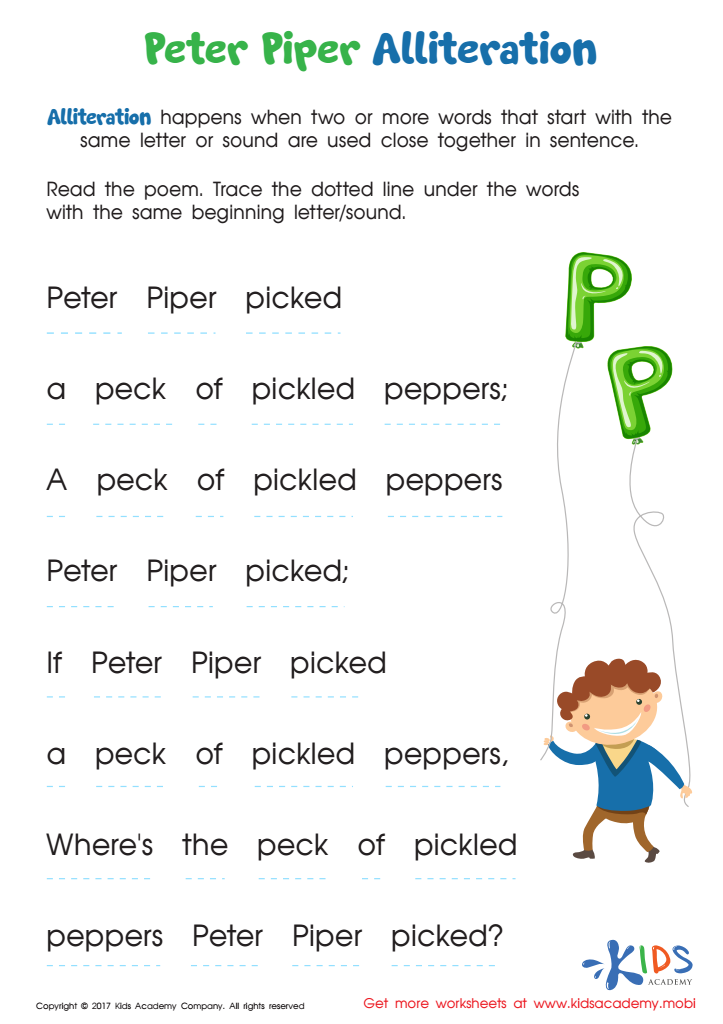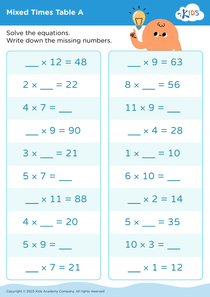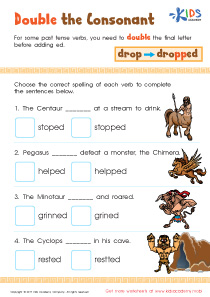Grade 3 Beginning Consonants Worksheets
1 filtered results
-
From - To
Homeschool Beginning Consonants Worksheets for Grade 3
Our Beginning Consonants Worksheets are perfect for Grade 3 students who are learning the basics of phonics. These worksheets focus on initial consonant sounds and provide plenty of opportunities for practice. Students will enjoy hunting for and circling the correct beginning consonant, sorting words into categories based on their initial consonant, and filling in missing consonant sounds. These beginning consonant worksheets are ideal for use in the classroom or for additional practice at home. They are a great resource to help students master initial consonant sounds, improving their reading and spelling skills.


Peter Piper Alliteration Worksheet
The Importance of Beginning Consonants Worksheets for Grade 3 Students
Beginning Consonants Worksheets are an effective tool for Grade 3 students to learn and practice initial consonant sounds. These worksheets are an excellent way to help students develop their reading and writing skills, as well as their phonetic awareness.
The primary objective of Beginning Consonants Worksheets is to teach and reinforce initial consonant sounds. These worksheets typically involve exercises that require students to identify the first consonant sound in a word and match it to a corresponding picture or word. Through these worksheets, students can learn the sound that consonants make when they are placed at the beginning of words and use this knowledge to have better spelling, reading, and writing skills.
These worksheets are beneficial for several reasons. Firstly, they introduce students to the concept of initial consonant sounds, which is a crucial foundational skill in phonics. This skill is essential for reading and writing skills development. With these basics understood, students have a good foundation moving forward.
Secondly, Beginning Consonants Worksheets are an excellent way to help students with their spelling. By identifying and matching consonant sounds to words, students can improve their spelling and word recognition skills, which are essential for producing clear and coherent text.
Thirdly, these worksheets enhance verbal memory, leading to better cognitive skills in students. Identifying initial consonants in words demands excellent memory skills since students must use their auditory memory to remember the sound that corresponds to each letter.
Fourthly, Beginning Consonants Worksheets can help build vocabulary. As students develop their skills in identifying initial consonant sounds, they may encounter various words that they have not encountered before. This creates an opportunity for them to build their vocabulary and word bank.
Finally, these worksheets are easy to use and can be adapted to suit individual student's learning preferences. Teachers can use Beginning Consonants Worksheets as a supplement to their teaching to reinforce knowledge. They can also differentiate the activities to suit the student's need and provide additional or alternative activities. These worksheets can also be used at home as an independent or guided learning tool.
In conclusion, Beginning Consonants Worksheets are an engaging, fun, and interactive way to help Grade 3 students develop initial consonant sounds recognition skills. These worksheets help students to improve their reading, writing, and spelling skills, build their vocabulary, and enhance their cognitive skills. Because these worksheets can be adapted to meet the needs of individual students, they are an excellent teaching tool for both school and home settings.

 Assign to the classroom
Assign to the classroom






